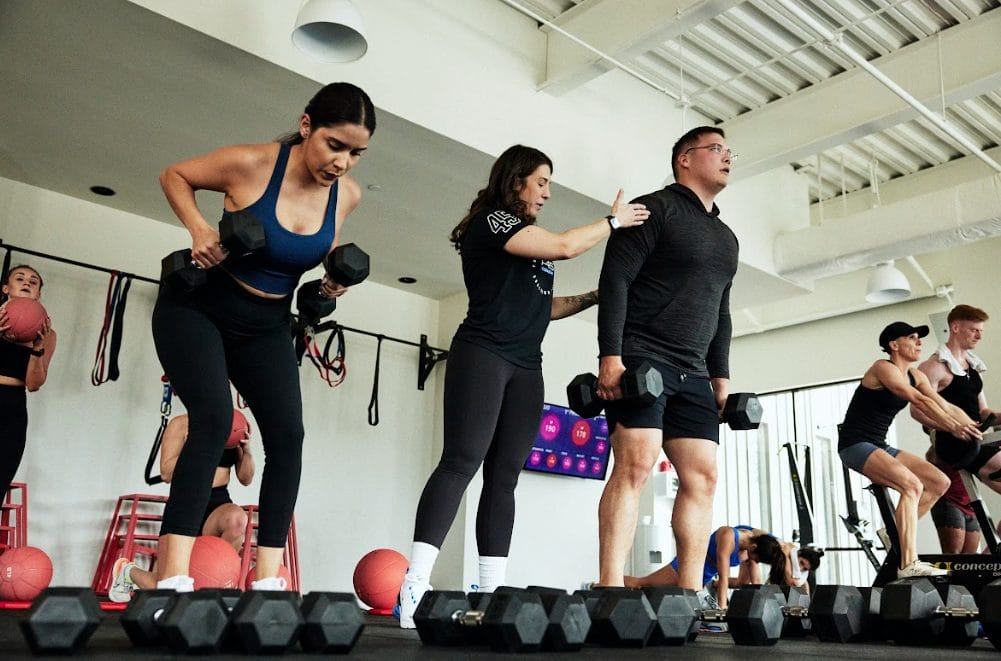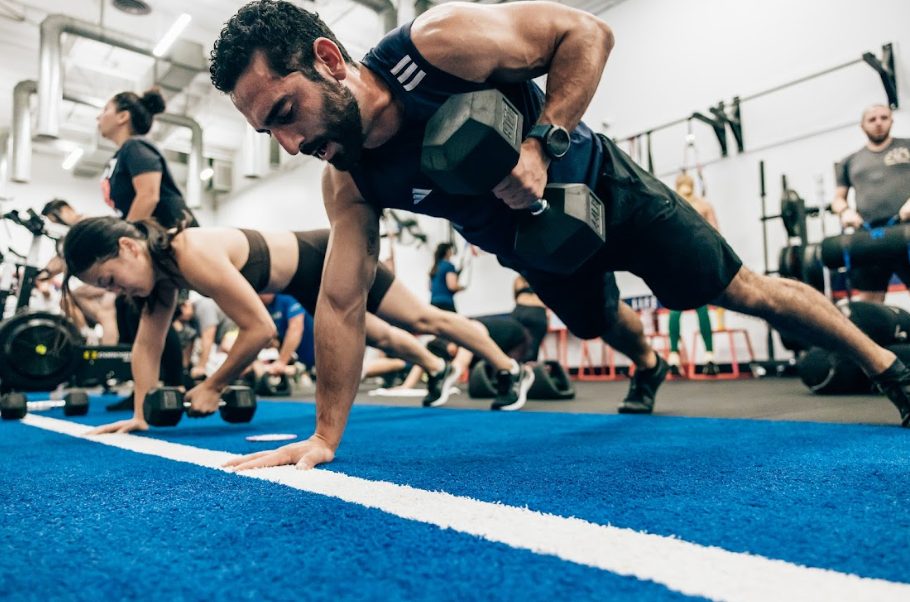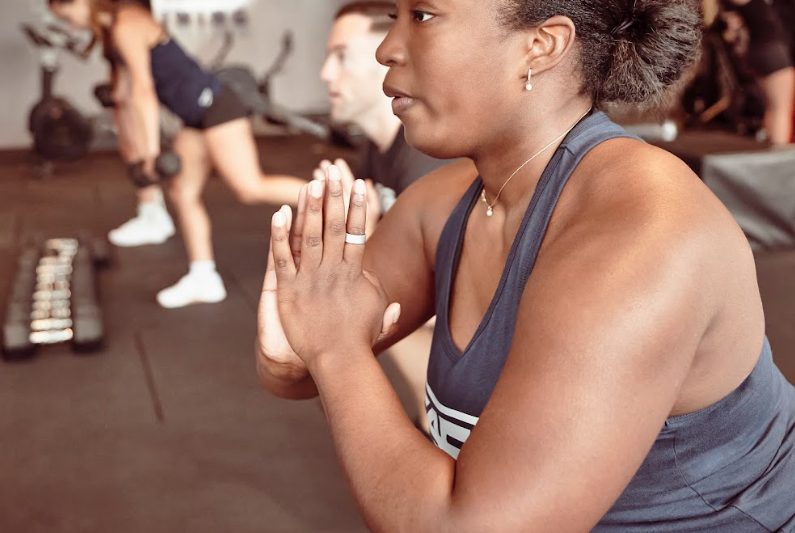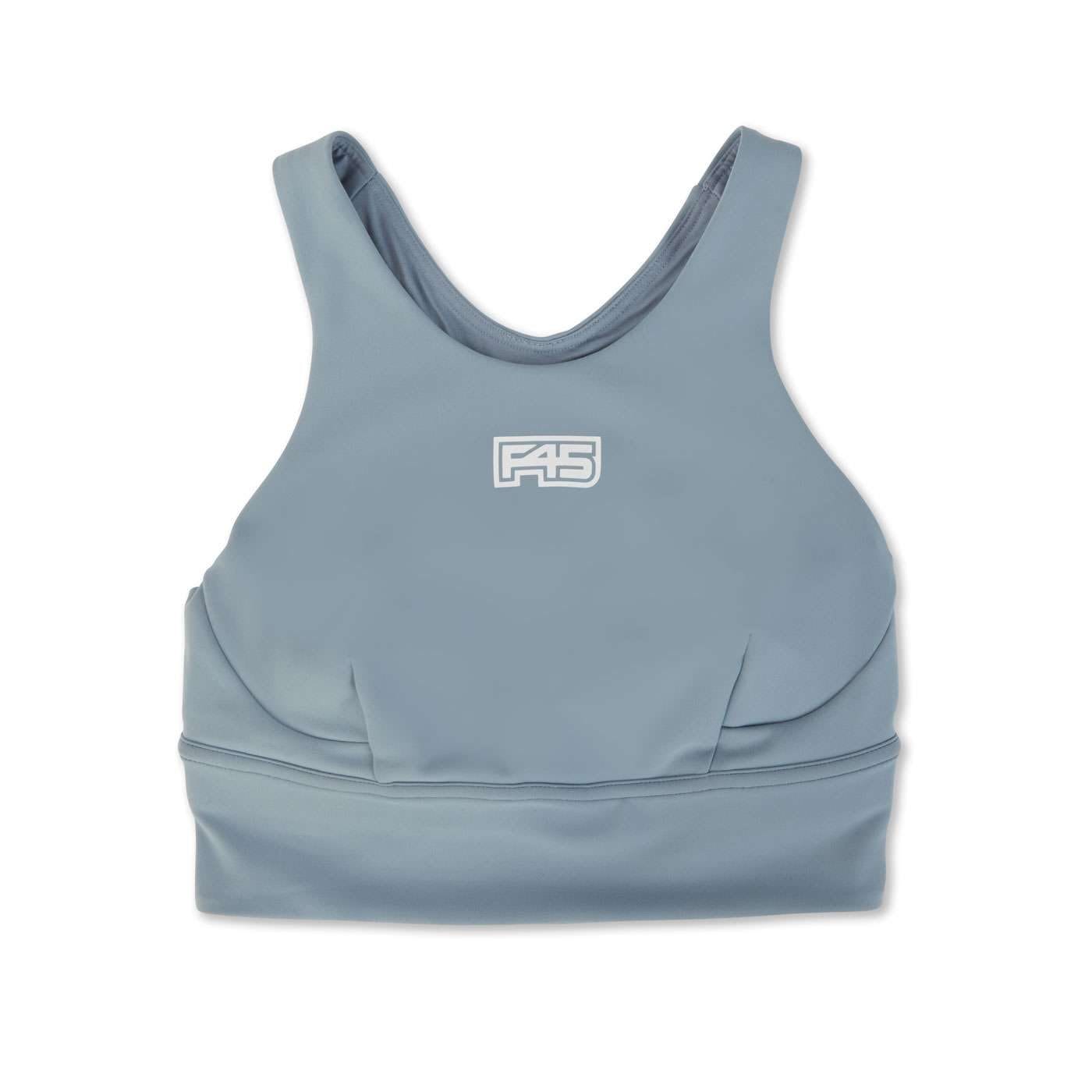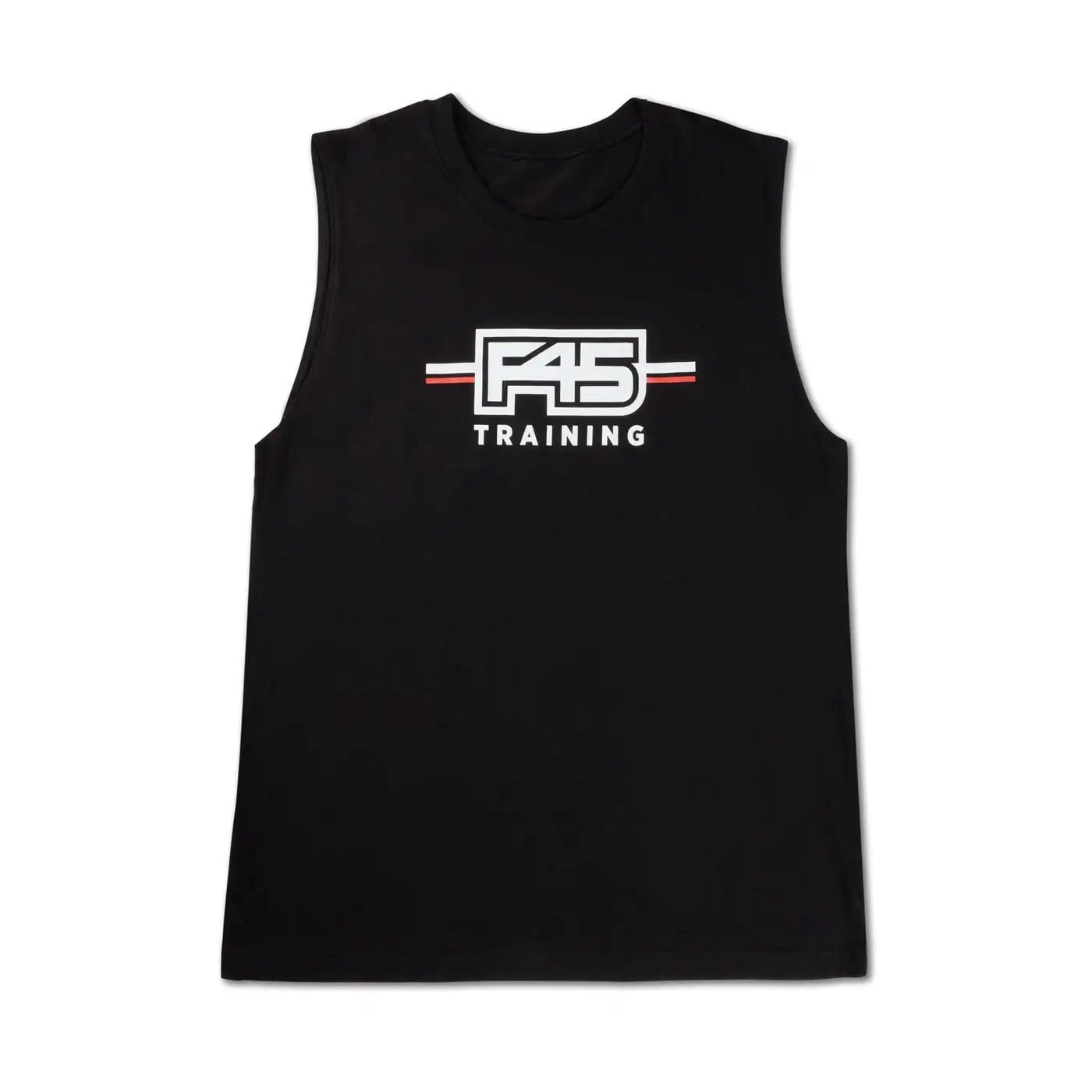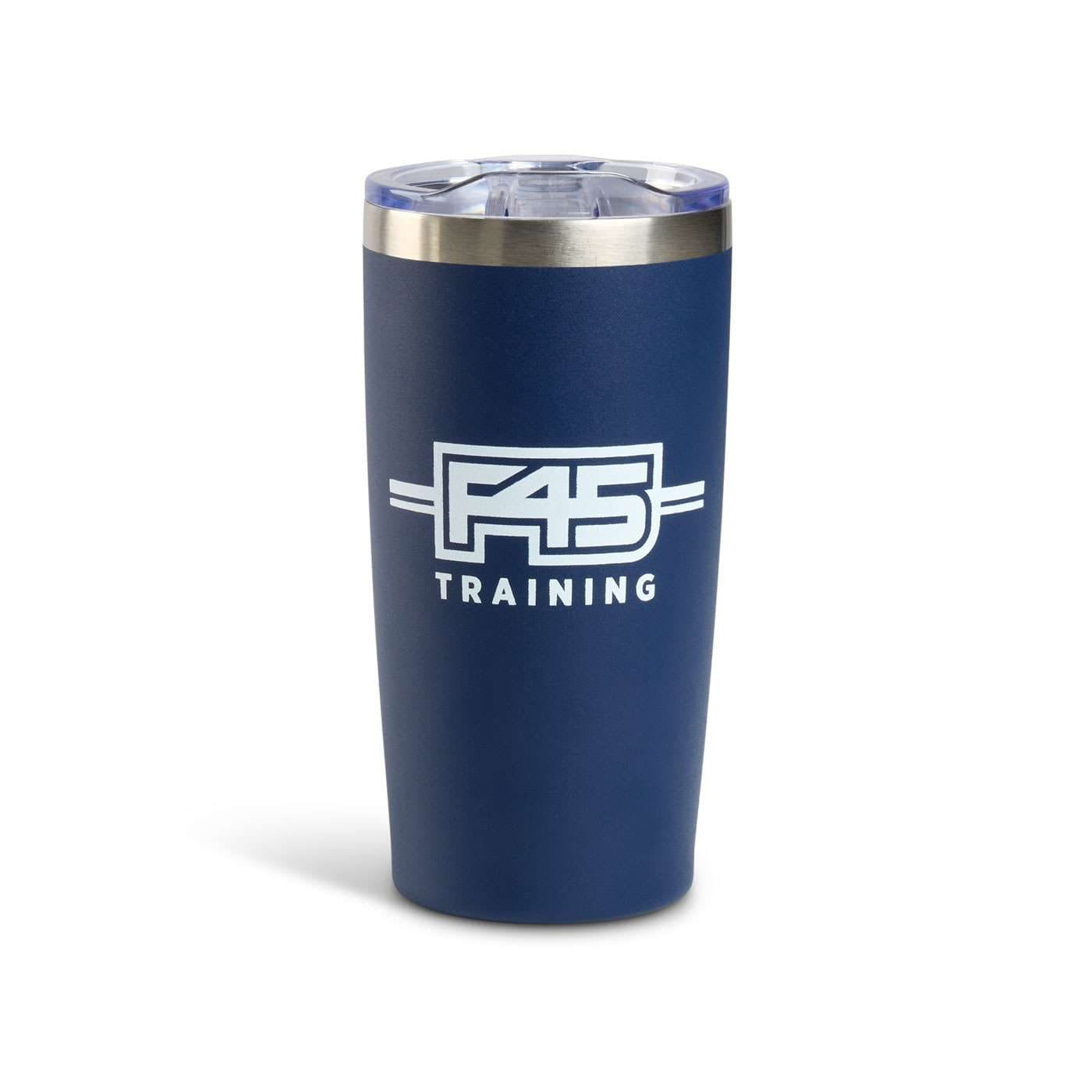Knee pain can be a major roadblock to staying active and healthy.
Whether your knee pain is due to injury, arthritis, or other conditions, knee strengthening exercises can help you stay fit while preventing further discomfort.
At F45 Training, we want to provide you with tips and exercises on how to work out with knee pain – so you can work out with confidence, live in comfort, and stay on track with your fitness goals. Read on to learn about common causes for knee pain and discover the top exercises we recommend for knee strengthening.
Common knee pain causes
Recognising knee pain is easy. Knowing what’s causing it, however, can be far more difficult to figure out. Knee pain can affect you at any stage of your life, regardless of your levels or mobility. Discomfort in and around the knee needs to be managed until it’s no longer limiting or is completely gone.
As with most joint discomfort, it’s important to understand that things won’t get better through rest alone, and that you’ll need to support your knees with strength training (specifically, knee pain exercises.) to see long-term results.
Below, we’ll explore some of the common causes of knee pain.
Injury
Knee injuries occur in all different forms of exercise and sports. Your knees play a key role in twisting, exploding forwards, changing direction and landing; and, when something interferes with your intended movement, knee injuries can occur.
Common knee injuries include:
- Sprains
- Dislocations
- Ligament, tendon or cartilage tears
Prolonged stress on the knee
Some knee pain causes come about from overuse, where repetitive pressure on your joints and bones slowly builds stress.
Knee stress problems can usually be resolved with all-important rest days, but it depends on what’s causing the stress, and the extent of the demands of your lifestyle on your knees. In any case, replacing what’s causing the stress with knee strengthening exercises will be useful.
Age
Throughout your life, your knees do a lot of work. Even when you’re going for a leisurely walk, your knees are absorbing the pressure of more than your entire body weight. It’s no surprise, then, that most age-related knee pain causes come from types of arthritis (cartilage wearing down over time).
It’s also normal for the muscles and ligaments around your knees to weaken as you get older, which is why we suggest modifying workouts for over 60s.
Why knee pain exercises are important
There are various reasons you may be experiencing knee pain. And to reduce or resolve that discomfort, you’ll need to do knee strengthening exercises that rebuild the muscles, tendons and ligaments that support your knee1 and contribute to injury prevention during workouts.
Knee exercises are also important in restoring your confidence in movements or workouts that involve your knee. Even after knee pain has resided, it can still take some time to feel safe putting force through your knee – but these exercises will help!
5 knee strengthening exercises
Strengthening exercises and recovery workouts are important for reducing knee pain, but for the best results they need to be performed correctly.
Specialist F45 trainer April Kong Min Qi says “Proper form ensures that the joints and muscles work efficiently without stress. Common mistakes include allowing the knees to cave inward during squats and overextending the knees during leg movements. These mistakes can strain the joints or overuse some muscles that can cause injury in the future.”
Below, we’ll guide you through how to work out with knee pain via five functional exercises.
1. Squats
Squatting improves your knee, hip and ankle mobility. They’re a common knee pain exercise, as you squat to pick up heavy objects safely. If you experience discomfort during squatting, reduce the speed of the squad or don’t squat as deeply.
To squat:
- Stand up straight with your feet shoulder width apart.
- Bend your knees and mimic a sitting down motion until your thighs are parallel with the floor.
- Straighten legs to return to your starting position.
2. Lying hamstring curls
By developing your hamstrings, you improve your knee stability and balance the muscles in your thighs. Hamstring curls also help to support your lower back.
For some light resistance, hold a dumbbell between your feet while performing this knee strengthening exercise.
To do a lying hamstring curl:
- Lie down flat on your stomach, holding a dumbbell between your feet.
- Slowly bend your knees toward your buttocks, keeping control of the dumbbell.
- Gently bring your knees back to the floor.
3. Leg extensions
Leg extensions target your quads, alleviating pressure around the knee and supporting stability. This exercise is usually performed as part of a resistance workout, and you will benefit most by using a machine in an exercise studio for this one.
If you experience some knee pain extending your legs, perform each extension slowly and reduce the weight: this will reduce the pressure on your kneecaps.
To perform a leg extension:
- Sit in the machine, making sure the ankle pad is just above your ankles.
- Grab the handles and pull yourself down into the seat.
- Extend your legs as far as they can go.
- Bend your legs, until your feet are back at the starting position.
4. Lateral band walks
Tight or weak hip muscles can sometimes be related to knee pain causes. A unique way to engage your hips and knees is with lateral band walks.
For this exercise, you’ll need a resistance band. Start by placing the band above your knees and, when your strength improves, place it above your ankles instead.
To perform a lateral band walk:
- Step into the band, so it is wrapped around your legs.
- Place the band above your knees and stand with your feet hip-width apart.
- Partially squat
- Step from side to side, ensuring tension is kept within the band.
5. Calf raises
Compared to the bigger muscles in your thighs, calf exercises are sometimes overlooked when learning how to work out with knee pain.
However, calf strength is crucial for taking pressure off your knee, helping you land safely after jumping. Calf raises can be easily performed during a studio or home workout and you do them standing or sitting.
To perform calf raises:
- Stand or sit with your feet hip width apart.
- Push up onto the balls of your feet.
- Slower lower your feet until they’re flat again.
To reduce discomfort, carry out knee strengthening exercises early and often. And, for further support, explore our top six stretches and exercises for back pain.
1 https://www.ncbi.nlm.nih.gov/pmc/articles/PMC3635671/
